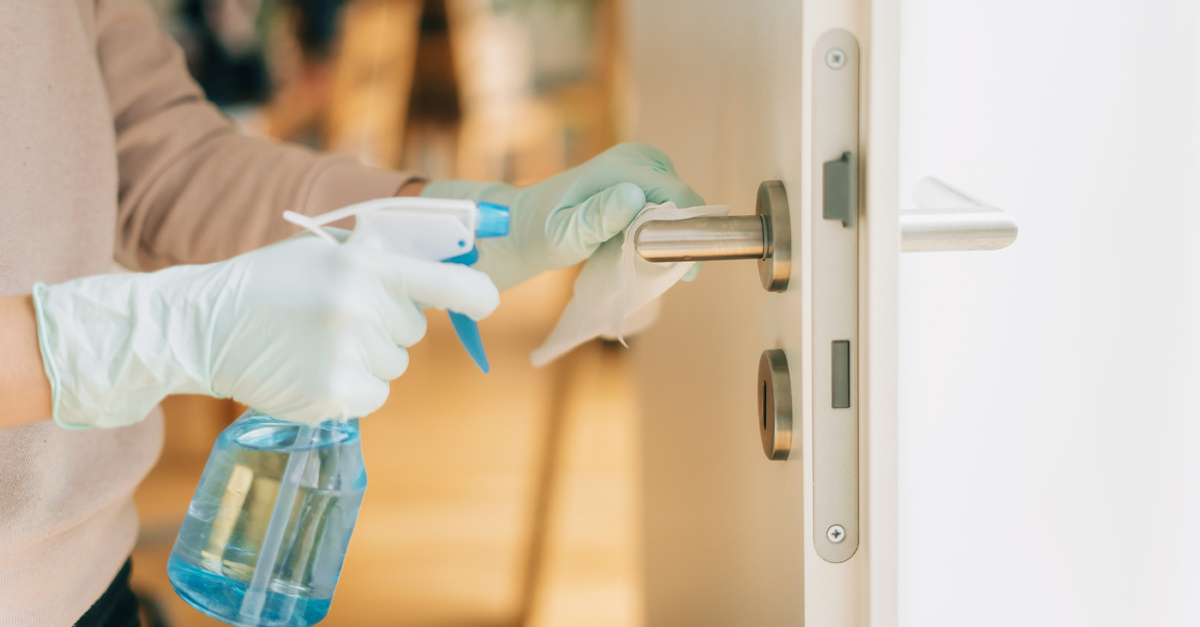In healthcare facilities, schools, and office spaces, facility professionals continually seek innovative solutions to address cleanliness challenges. One powerful tool in this endeavor: antimicrobials. These agents inhibit the growth of degrading microorganisms, complement a building’s existing maintenance strategies, and offer an added layer of product protection. Let’s explore the benefits of antimicrobials and practical insights into their safe and effective application.
Understanding antimicrobials
Antimicrobials are substances designed to reduce the presence and growth of microorganisms—including bacteria, fungi, mold, and mildew—on and within materials. Unlike traditional cleaning agents—which remove dirt and microorganisms from surfaces—antimicrobial agents provide ongoing product protection, helping treated materials resist the growth and reproduction of damaging microbes over their expected lifetime.
The various types of antimicrobial treatments include built-in antimicrobials integrated into materials and textiles during manufacturing. Each type of treatment offers unique advantages depending on the facility’s setting and needs. When antimicrobial technology is integrated into products and fabrics, it continuously reduces the number of microbes throughout a treated product’s expected life cycle.
One common misconception is that antimicrobials alone can eliminate all microorganisms. In reality, products featuring antimicrobial protection still need to be cleaned. Antimicrobials complement regular cleaning by keeping products cleaner between cleanings.
Key benefits for facility management
The added layer of protection provided by antimicrobial treatments is particularly valuable for high-touch areas such as door handles, elevator buttons, and shared equipment, where frequent contact increases the risk of degradation. Facilities benefit through:
Cleaner surfaces: Because antimicrobials support cleaner surfaces by helping to maintain cleanliness between regular cleaning cycles, they can be especially beneficial in environments where cleanliness is paramount, such as hospitals and food preparation areas.
Cost efficiency: Antimicrobial-treated surfaces can lead to long-term cost savings. By reducing wear and tear caused by microbial damage—such as staining, odor, or material degradation—facility managers can extend the life span of assets, decreasing replacement and maintenance costs.
When used appropriately, antimicrobials can also contribute to sustainability efforts. According to Health Care Without Harm, hospitals in the U.S. generate over 42 pounds of waste per bed per day and produce more than 5 million tons of waste each year. By incorporating antimicrobials to extend product life cycles, facilities can reduce overall resource consumption. Many antimicrobials today are produced heavy-metal free, further reducing the impact of harsh chemical cleaners on the environment.
Practical applications for professionals
Guidance for in-house custodial staff: Custodians can integrate antimicrobials into their cleaning routines by targeting high-touch surfaces such as desks, railings, and shared devices. Articles treated with antimicrobials provide an extra layer of surface protection, particularly in areas that are difficult to clean frequently.
Guidance for facility managers: Facility managers can prioritize antimicrobial solutions in procurement decisions. For example, specifying antimicrobial-treated flooring, wall paints, or HVAC components can contribute to a cleaner facility without increasing daily operational burdens. Depending on the facility, any high-touchpoint or reusable material integrated with antimicrobial technology can be especially effective in reducing microbial spread.
How to implement antimicrobial solutions safely
Despite their benefits, antimicrobials should complement—not replace—routine cleaning and disinfecting practices. Professionals should:
- Evaluate efficacy: Look for third-party certifications or evidence supporting the antimicrobial claims of products. Risk assessments by independent scientists, scientific bodies, and government agencies—including the U.S. Environmental Protection Agency (EPA) and the U.S. Food and Drug Administration—should confirm the safety of antimicrobial additives at the levels approved for use in consumer, commercial, and health care products.
- Understand regulations: Be aware of guidelines from agencies such as the EPA regarding antimicrobial usage in public spaces.
- Train staff: Ensure custodial teams are trained to use antimicrobial products correctly and safely.
The future of antimicrobials in facility management
As antimicrobial technologies evolve, their potential applications continue to expand. Innovations such as self-cleaning surfaces and advanced coatings create exciting opportunities for facility managers to improve cleanliness and efficiency. Staying informed about these advancements helps professionals adopt cutting-edge solutions that align with their facility’s specific needs.
Antimicrobials provide a versatile and effective way to maintain cleaner facilities. By reducing microbial growth, they enhance aesthetics, extend product life spans, and offer long-term cost benefits. Facility managers and custodial professionals alike can maximize these benefits by incorporating antimicrobials into their cleaning strategies while adhering to safe and responsible use practices.
By staying informed about advancements in antimicrobial technologies and integrating them thoughtfully, professionals can extend the effectiveness of cleaning efforts, creating cleaner and welcoming environments for all occupants.




